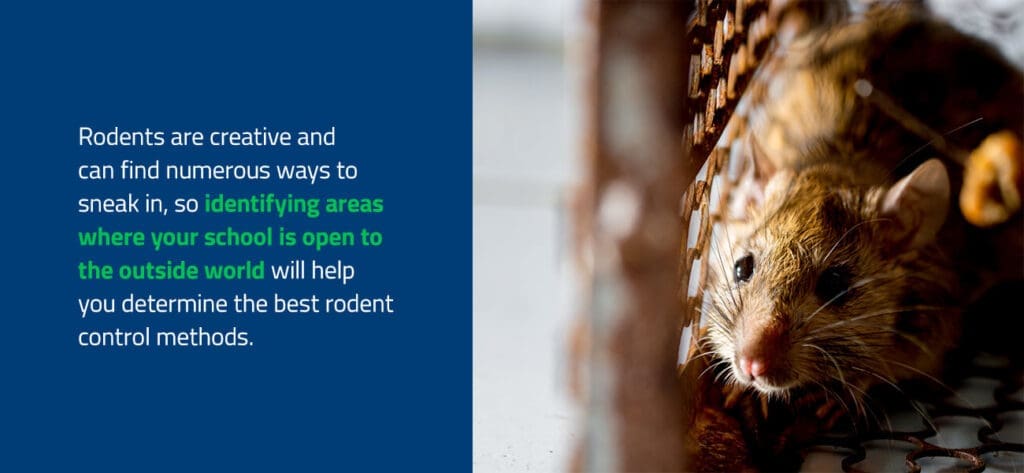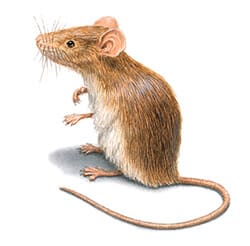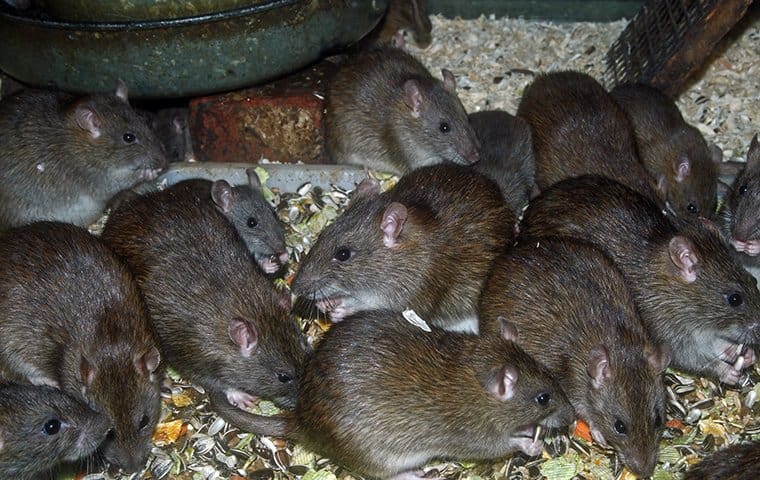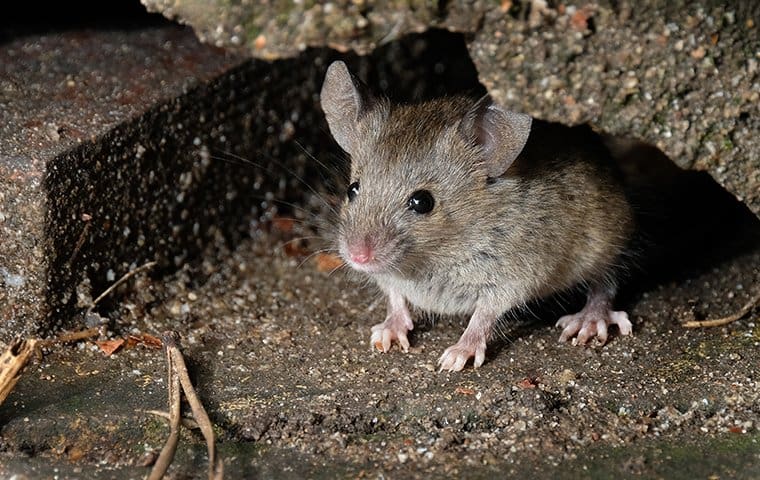In “The World Of Rodents: Identification, Prevention, And Treatment,” you will uncover a comprehensive guide that aims to equip you with the knowledge needed to tackle rodent infestations. This informative article not only provides useful tips on identifying different species of rodents, but also outlines effective prevention strategies to keep your home rodent-free. Additionally, it offers valuable insights into various treatment options, helping you address the issue promptly and effectively. Whether you’re dealing with a current infestation or aiming to prevent one in the future, this article is a must-read for anyone seeking effective pest control solutions.
The World of Rodents: Identification, Prevention, and Treatment
Rodents are a common nuisance that can invade your home, cause damage to your property, and pose health risks to you and your family. With their ability to reproduce rapidly and their knack for finding ways into your living spaces, it’s important to be knowledgeable about these pests and how to effectively deal with them. In this comprehensive article, we will explore different types of rodents, identify signs of rodent infestation, discuss prevention methods, examine rodent diseases and health risks, provide tips for rodent-proofing your home, explore DIY removal methods, discuss the importance of professional services, debunk common misconceptions about rodents, and review various rodent-related products.

Rodent Types
House Mouse
The house mouse (Mus musculus) is one of the most common rodents found in homes. These small creatures have a slender body and can vary in color from light brown to gray. House mice are excellent climbers and can squeeze through tiny openings to gain access to your home. They are known for their ability to contaminate food and spread diseases through their droppings and urine.
Rat
Rats, particularly the Norway rat (Rattus norvegicus) and the roof rat (Rattus rattus), are another common rodent problem. These larger rodents can cause significant damage to property and are known carriers of various diseases. The Norway rat is a burrowing species that typically resides in the ground, while roof rats prefer to nest in higher areas such as attics and trees.
Squirrel
Squirrels, though often admired for their cute appearance and acrobatic abilities, can become a nuisance when they enter your home. The most common squirrel species found in residential areas are the gray squirrel and the red squirrel. These rodents are known for their constant chewing, which can cause damage to electrical wires, insulation, and stored belongings.
Chipmunk
Chipmunks are small, ground-dwelling rodents that are often seen darting around lawns and gardens. While they may seem harmless, chipmunks can dig burrows and cause damage to gardens and landscaping. They are also known for their tendency to raid bird feeders and food storage areas.
Gerbil
Gerbils are popular as pets due to their small size, friendly demeanor, and low maintenance care. These rodents have long, furry tails and can be various shades of brown, gray, or white. While gerbils are typically not a problem in homes, it’s important to secure their enclosures to prevent escape or accidental release into the wild.
Hamster
Similar to gerbils, hamsters are often kept as pets and are known for their small size and adorable appearance. They come in various colors and have a short, stubby tail. Hamsters are generally not a problem in homes unless they escape their enclosures or are intentionally released.
Vole
Voles, also known as meadow mice, are small rodents that live in underground burrows. They have a stocky body, short legs, and a short tail. Voles are herbivorous and can cause damage to lawns, gardens, and crops by feeding on roots and plants.
Mole
Moled are underground-dwelling creatures with a cylindrical body, tiny eyes, and strong front paws designed for digging. While not typically a problem in homes, moles can create unsightly tunnels and mounds in lawns and gardens.
Muskrat
Muskrats are semi-aquatic rodents that are found near bodies of water such as lakes, rivers, and marshes. They have a stocky body, webbed feet, and a long, scaly tail. Muskrats can sometimes become a problem when they burrow into dams, levees, and other water management structures.
Beaver
Beavers, known for their large, flat tails and ability to build dams and lodges, are the largest rodents in North America. While beavers generally reside in natural water bodies, they can cause significant damage to trees and artificial structures if they wander into residential areas.
Identifying Rodent Infestation
The first step in addressing a rodent problem is to identify if you have an infestation. Here are some key signs to look out for:
Physical Signs
Rodents often leave physical signs that indicate their presence in your home. Look for droppings, gnaw marks, and tracks as evidence of their activity. Droppings can vary in size and shape depending on the species, while gnaw marks may appear on walls, furniture, or electrical wires.
Droppings
Rodent droppings are a clear indicator of infestation. Mouse droppings are small and resemble dark grains of rice, while rat droppings are larger and have a rectangular shape.
Damage to Property
Rodents are notorious for causing damage to property by chewing through walls, insulation, electrical wires, and plastic pipes. Look for chewed materials or signs of damage in areas where rodents are likely to frequent, such as attics, basements, and crawl spaces.
Gnaw Marks
Gnaw marks on wood, plastic, or other materials can indicate the presence of rodents. These marks are caused by rodents constantly gnawing to keep their teeth from growing too long.
Nests
Rodents create nests using materials such as shredded paper, fabric, insulation, or plant matter. Look for these nests in hidden areas such as attics, basements, and behind appliances.
Noise and Odor
If you hear scratching or scurrying sounds in your walls, ceilings, or floors, it may be a sign of rodent activity. Additionally, rodents can leave a distinct odor due to their urine and droppings.
Visual Sightings
Finally, if you actually see live rodents in your home, it’s an obvious indication of an infestation. Keep in mind that rodents are most active at night, so you may have a better chance of spotting them during evening hours.
Preventing Rodent Infestation
Prevention is key when it comes to rodent control. By taking proactive measures, you can reduce the risk of a rodent infestation in your home. Here are some effective prevention methods:
Sealing Entry Points
Rodents can enter your home through small openings and gaps. Inspect the exterior of your home and seal any cracks or holes using caulk, steel wool, or other suitable materials. Pay close attention to areas around pipes, vents, windows, doors, and the foundation.
Proper Food Storage
To avoid attracting rodents, store food in sealed containers made of glass or heavy-duty plastic. This includes dry food products, pet food, and birdseed. Regularly clean up food spills and crumbs to eliminate potential food sources.
Clearing Clutter
Rodents love cluttered spaces as they provide hiding spots and nesting materials. Keep your living areas clean and clutter-free by regularly organizing and decluttering. Pay special attention to areas such as basements, attics, and storage rooms.
Landscaping Tips
Maintain a clean and well-maintained yard by trimming shrubs and tree branches away from your home. This eliminates potential entry points and reduces hiding spots for rodents. Additionally, clean up fallen fruits or vegetables from your garden to avoid attracting rodents.
Regular Cleaning
Regular cleaning is essential for preventing rodent infestations. Vacuum and sweep your floors regularly to remove crumbs and food debris. Wipe down countertops, tables, and other surfaces to eliminate potential food sources. Pay extra attention to kitchen and dining areas.
Securing Garbage
Make sure your garbage bins have tight-fitting lids and are stored away from your home. Rodents are attracted to the smell of food waste and can easily access open or poorly secured garbage containers.
Maintaining Drains and Pipes
Regularly inspect and maintain your drains and pipes to ensure there are no leaks or standing water. Rodents are attracted to sources of water and can use leaky pipes as a water source.
Using Rodent Repellents
Consider using rodent repellents such as peppermint oil or electronic ultrasonic devices. While these methods may have limited effectiveness, they can potentially deter rodents from entering your home.
Professional Inspection
If you’re unsure about the vulnerability of your home to rodent infestations, consider hiring a professional pest control company to conduct a thorough inspection. They can identify potential entry points and provide recommendations for preventing infestations.
Companion Animals
Having a cat or dog as a companion animal can help deter rodents from entering your home. The presence of a predator can make rodents think twice about entering your living spaces. However, it’s important to note that not all cats or dogs have a strong prey drive or will actively hunt rodents.
Rodent Diseases
Rodents are not only a nuisance but also carry a variety of diseases that can pose serious health risks to humans. Here are some common rodent-related diseases:
Hantavirus
Hantavirus is a potentially life-threatening disease transmitted by rodents, especially deer mice. It is primarily contracted by humans through inhalation of virus-contaminated droppings, urine, or saliva. Symptoms include fever, muscle aches, and respiratory distress.
Salmonellosis
Salmonellosis is a bacterial infection caused by the Salmonella bacteria. Rodents can carry and spread this bacteria through their droppings and urine. Symptoms include diarrhea, abdominal pain, and fever.
Leptospirosis
Leptospirosis is an infectious disease caused by the Leptospira bacteria. It can be transmitted to humans through contact with contaminated water or soil contaminated with rodent urine. Symptoms can range from mild to severe and include fever, headache, muscle aches, and jaundice.
Lymphocytic Choriomeningitis (LCM)
LCM is a viral disease that can be transmitted to humans through inhalation of airborne particles contaminated with rodent droppings or through direct contact with infected rodents. Symptoms include fever, headache, muscle aches, and meningitis.
Tularemia
Tularemia, also known as rabbit fever, can be transmitted to humans through direct contact with infected rodents, their droppings, or contaminated soil. It can cause flu-like symptoms, skin ulcers, and in severe cases, pneumonia.
Plague
The plague is a serious bacterial infection caused by the Yersinia pestis bacteria. It can be transmitted to humans through bites from infected fleas found on rodents such as rats. Symptoms include fever, chills, weakness, and swollen lymph nodes.
Rat-Bite Fever
Rat-bite fever is a bacterial infection that can be transmitted to humans through bites or scratches from infected rodents, or by handling them. Symptoms include fever, chills, rash, and joint pain.
Rabies
While rare, rodents such as squirrels, chipmunks, and rats can potentially transmit rabies to humans through bites or scratches. Rabies is a viral infection that affects the nervous system and is usually fatal if left untreated.

Health Risks and Dangers of Rodents
In addition to transmitting diseases, rodents pose several other health risks and dangers. Here are some of the risks associated with rodents:
Contamination of Food and Water
Rodents contaminate food and water sources with their droppings, urine, and fur. Ingesting or coming into contact with contaminated food and water can lead to various illnesses, including salmonellosis and leptospirosis.
Allergies and Asthma
Rodent allergens, especially in their urine and droppings, can cause or exacerbate allergies and asthma symptoms in susceptible individuals. Exposure to these allergens may lead to sneezing, itching, watery eyes, and respiratory issues.
Structural Damage
Rodents have a constant need to chew to keep their teeth from growing too long. This can lead to significant damage to walls, insulation, electrical wires, and other structural components of your home, increasing the risk of fires and costly repairs.
Electrical Fires
One of the most dangerous risks of a rodent infestation is the potential for electrical fires. Rodents can chew through electrical wires, exposing the conductive components and increasing the risk of a short circuit and subsequent fire.
Spread of Disease
As mentioned earlier, rodents can transmit various diseases to humans through direct contact, bites, scratches, or indirectly through contaminated droppings and urine. These diseases can range from mild to severe and may require medical attention.
Bites and Scratches
While rodents such as mice and rats are generally not aggressive, they may bite or scratch if they feel threatened or cornered. These bites and scratches can lead to infections, especially if not properly cleaned and treated.
Rodent-Proofing Your Home
To effectively keep rodents out of your home, it’s essential to take steps to rodent-proof your living spaces. Here are some measures you can take:
Integrity of Exterior Walls
Inspect the exterior walls of your home for any cracks, gaps, or other openings that rodents can use to gain access. Seal these openings using caulk, steel wool, or other suitable materials.
Sealing Cracks and Holes
Check both the interior and exterior of your home for any cracks or holes that rodents can use as entry points. Seal these openings using appropriate materials to prevent rodents from squeezing through.
Mesh Screens on Vents
Ensure that all vents, including those for dryer vents and attic vents, are fitted with tight-fitting, rodent-proof mesh screens. These screens will allow ventilation while keeping rodents out.
Tightly Sealed Doors and Windows
Make sure all doors and windows close tightly and have appropriate weatherstripping to prevent rodents from squeezing through small gaps. Pay extra attention to garage doors and pet doors.
Installing Weatherstripping
Install weatherstripping around doors and windows to create a tight seal, reducing the risk of rodents finding their way indoors. Replace any damaged or worn weatherstripping to maintain its effectiveness.
Chimney and Flue Maintenance
Inspect your chimney and flue for any gaps or openings that can provide access for rodents. Install appropriate screens or covers to prevent rodents from entering through these openings.
Keeping Basements and Attics Dry
Rodents are attracted to damp and moist areas. Keep your basements and attics dry and well-ventilated to discourage rodents from making these areas their nesting grounds.
Ventilation and Humidity Control
Ensure proper ventilation and humidity control throughout your home, especially in areas prone to excess moisture or condensation. This helps prevent the creation of an environment that is conducive to rodent activity.
Proper Waste Management
Store your garbage in tightly sealed containers, both indoors and outdoors. Regularly clean trash cans and keep them away from your home to minimize the risk of attracting rodents.
Regular Pest Control Maintenance
Consider implementing a regular pest control maintenance plan to proactively manage any potential rodent problems. This can involve hiring a professional pest control service or using DIY methods to keep rodents at bay.

DIY Rodent Removal Methods
If you discover a rodent infestation in your home, there are several do-it-yourself (DIY) removal methods you can try. Here are some commonly used approaches:
Traps
Traps can be an effective method for capturing and removing rodents from your home. There are several types of traps available, including snap traps, live traps, and glue traps. Follow the instructions provided with the traps and place them in areas where rodents are known to frequent.
Natural Repellents
Natural repellents such as peppermint oil, ammonia, or vinegar are often used to deter rodents. These repellents can be applied to cotton balls or soaked in rags and placed in areas where rodents are active. While these repellents may have limited effectiveness, they can serve as a deterrent in some cases.
Ultrasonic Devices
ultrasonic devices emit high-frequency sounds that are unpleasant to rodents, potentially driving them away. These devices are typically plugged into electrical outlets and can cover a specific range. Keep in mind that the effectiveness of ultrasonic devices can vary, and rodents can become accustomed to the sound over time.
Rodenticides
Rodenticides, also known as rodent baits or poisons, can be used to control rodent populations. These baits contain toxic substances that are attractive to rodents but should be used with caution. Follow the instructions carefully and ensure that baits are placed in areas inaccessible to children, pets, and non-target animals.
Using Cats as Predators
If you have a cat, their natural hunting instinct can help control rodent populations. Cats are known for their ability to chase and catch rodents, acting as a natural predator. However, not all cats have a strong prey drive, and some may not actively hunt rodents.
Sealing Entry Points
In addition to removal methods, it’s important to identify and seal any entry points to prevent future infestations. Use caulk, steel wool, or other suitable materials to seal cracks, gaps, and holes that rodents could use to access your home.
Professional Rodent Removal Services
While DIY methods can be effective in managing small rodent problems, some infestations may require professional intervention. Here are some reasons why professional services are important:
Importance of Professional Services
Professional pest control services have the experience, knowledge, and equipment to effectively assess, manage, and prevent rodent infestations. They can provide customized treatment plans based on your specific situation and take into account factors such as the severity of the infestation, the type of rodent involved, and the layout of your home.
Inspection and Assessment
A professional pest control company will conduct a thorough inspection of your property to identify any signs of rodent activity or potential entry points. They will assess the severity of the infestation and determine the most effective treatment methods.
Customized Treatment Plans
Based on the findings of the inspection, a professional pest control technician will develop a customized treatment plan to address your specific rodent problem. This may involve a combination of traps, baits, exclusion methods, and other appropriate techniques.
Safe and Effective Techniques
Professional pest control technicians use industry-approved methods and products that are safe for both humans and pets. They have the knowledge to identify and use the most effective rodenticides and traps while minimizing the potential risks.
Exclusion and Sealing
In addition to removing existing rodents, professional services will focus on preventing future infestations. This may involve sealing entry points, repairing damage, and implementing exclusion techniques to keep rodents out of your home.
Follow-Up and Monitoring
Professional pest control services often include follow-up visits to ensure the effectiveness of the treatment and monitor for any signs of recurring infestations. This ongoing monitoring helps to ensure that your home remains rodent-free.

Common Misconceptions About Rodents
There are several common misconceptions about rodents that can lead to ineffective control methods. It’s important to separate fact from fiction when dealing with rodent problems. Here are some common misconceptions:
Cats Can Control All Rodent Problems
While cats are natural predators and may help control rodent populations, they are not a foolproof solution. Some cats may not actively hunt or may not have access to areas where rodents are present. Relying solely on cats for rodent control may not be sufficient in all situations.
Peppermint Oil Repels Rodents
Peppermint oil is often touted as a natural remedy to repel rodents. While rodents may not be fond of the smell of peppermint, its effectiveness as a repellent is limited. Using peppermint oil on its own is unlikely to provide complete protection against rodent infestations.
DIY Traps Are Sufficient
While DIY traps can be effective for capturing individual rodents, they may not address the root cause of the infestation. DIY methods often overlook the importance of proper exclusion and sealing, which are key factors in preventing future infestations.
Rodents Only Infest Dirty Spaces
Contrary to popular belief, rodents can infest clean homes and spaces as long as they have access to food, water, and shelter. Good sanitation practices are important for preventing infestations, but even the cleanest homes can be vulnerable to rodent problems.
Rodents Are Harmless
Rodents should not be underestimated. They can cause significant damage to property, spread diseases, and pose health risks to humans. Ignoring a rodent infestation or assuming that rodents are harmless can lead to serious consequences.
Rodent-Related Product Reviews
When dealing with rodent problems, it’s often helpful to rely on tried and tested products. Here are some reviews of common rodent-related products:
Ultrasonic Rodent Repellents
Ultrasonic rodent repellents emit high-frequency sounds that are intended to repel rodents from your home. While some people report success with these devices, there is mixed evidence regarding their effectiveness. It’s important to research and choose reputable brands that have received positive reviews.
Humane Traps
Humane traps, such as live traps, are designed to capture rodents without harming them. These traps can be effective for capturing rodents alive, allowing you to release them outdoors. Look for traps made from durable materials and consider using bait to increase their effectiveness.
Rodenticides
Rodenticides, or rodent baits, are designed to kill rodents when ingested. When choosing rodenticides, select products that are effective against the specific rodent species you are dealing with. Follow the instructions carefully and ensure that baits are placed in areas inaccessible to children, pets, and non-target animals.
Sealing and Exclusion Products
Various sealing and exclusion products are available to help prevent rodent entry into your home. These products include caulk, steel wool, weatherstripping, and mesh screens. Research and choose products that are suitable for the specific areas you need to seal.
Rodent-Proof Containers
Rodent-proof containers are essential for storing food, pet food, and other items vulnerable to rodent infestations. Look for containers made of heavy-duty plastic or glass with secure, airtight lids. Avoid using materials that rodents can easily chew through, such as plastic bags.
Pest Control Services
When considering professional pest control services, research and choose reputable companies with positive reviews. Look for companies that offer customized treatment plans, safe and effective techniques, and follow-up services to ensure long-term pest control.
Rodent-Proofing Tools
There are various tools and products available to help with rodent-proofing your home. These include caulk guns, steel wool applicators, weatherstripping tools, and mesh screens. Research and choose tools that are appropriate for the specific sealing and exclusion needs of your home.
Companion Animal Products
If you have companion animals, such as cats or dogs, there are products available to help with rodent control. These include flea treatments, training aids, and toys that stimulate their prey drive. Choose products that are safe and suitable for your specific pets.
Home Cleaning Solutions
Maintaining a clean and hygienic living environment is important for preventing rodent infestations. There are various home cleaning solutions available that can help eliminate odors, remove stains, and disinfect areas. Choose products that are safe and effective, and consider environmentally friendly options.
Basement and Attic Dehumidifiers
Keeping your basement and attic dry is essential for preventing rodent activity. Dehumidifiers can help remove excess moisture and maintain humidity levels in these areas. Choose dehumidifiers that are suitable for the size of your space and have features such as automatic shutoff and adjustable humidity settings.
In conclusion, understanding the world of rodents is crucial for effective identification, prevention, and treatment of rodent infestations. By recognizing different rodent types, identifying signs of infestations, implementing preventive measures, and addressing health risks associated with rodents, you can create a rodent-free living environment. Whether using DIY methods or seeking professional services, it’s important to choose appropriate tools, products, and techniques to effectively manage rodent problems. By debunking common misconceptions and relying on reputable rodent-related products, you can ensure the safety, health, and comfort of your home and family.


I am Randy, the author behind PestControld.com. Drawing from decades of experience, I aim to provide valuable insights, expert advice, and practical recommendations to help you make informed decisions when assessing viable pest control solutions.